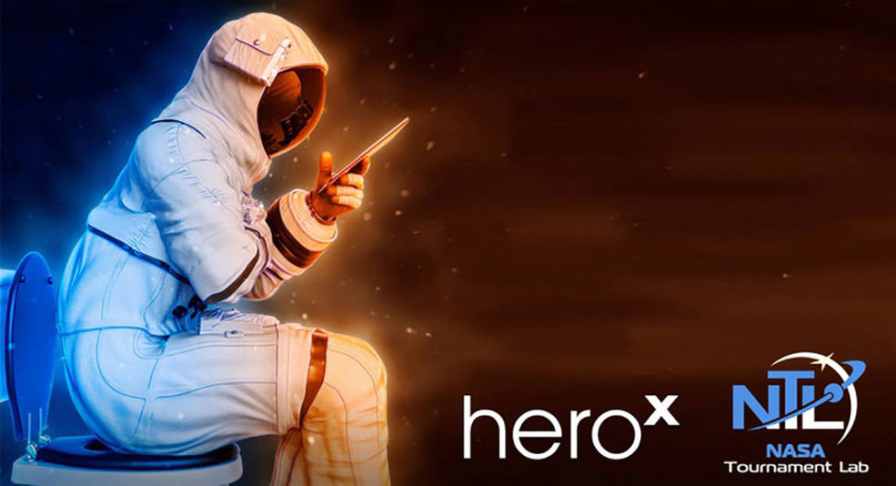NASA is offering $35,000 in prizes to design toilet that will work on the moon

Do you have what it takes to design a futuristic toilet that will work on the moon? National Aeronautics and Space Administration (NASA) is looking for people to help design and innovate space toilet concepts as part of its Lunar Loo Challenge. NASA is giving away $35,000 in total prizes to the winner of the challenge.
As NASA prepares for it return to the Moon, innumerable activities to equip, shelter, and otherwise support future astronauts are underway. These astronauts will be eating and drinking, and subsequently urinating and defecating in microgravity and lunar gravity. While astronauts are in the cabin and out of their spacesuits, they will need a toilet that has all the same capabilities as ones here on Earth. NASA is calling on the global community for their novel design concepts for compact toilets that can operate in both microgravity and lunar gravity.
These designs may be adapted for use in the Artemis lunar landers that take us back to the Moon. Although space toilets already exist and are in use (at the International Space Station, for example), they are designed for microgravity only. NASA’s Human Landing System Program is looking for a next-generation device that is smaller, more efficient, and capable of working in both microgravity and lunar gravity. The challenge includes a Technical category and Junior category. NASA is giving away $35,000 in total prizes to the winner of the Technical category. The Junior category winner will receive public recognition from NASA and from HeroX, a winner’s certificate, and an item of official NASA-logoed merchandise.
The Artemis astronauts exploring the Moon will use the most advanced space systems of the 21st century – including some of the most basic home comforts, like a toilet. NASA is calling on the global community to help innovate space toilet concepts through the Lunar Loo Challenge.
The evolution of the space toilet began with the space shuttle, so astronauts living aboard the International Space Station use a toilet designed for long-duration missions in microgravity. Astronauts exploring on the Moon, however, will need a smaller, lighter, simpler toilet inside their lunar lander, because every ounce of mass on the lander is carefully allocated. For every kilogram (2.2 pounds) of mass, 10 kilograms (22 pounds) of propellant is needed to descend to the lunar surface and launch back to lunar orbit.
The Lunar Loo Challenge seeks novel design concepts for low-mass, compact toilets that can reduce the current state-of-the art toilet mass by more than half – from 54 kg to 31 kg – and reduce the volume by 70% – from 0.17 cubic meters to 0.12 cubic meters. For comparison, the standard toilet you might have in your house weighs 30-60 kg, but the complexity of operating in reduced gravity environments requires more components for a space toilet.
“Our astronauts accomplish amazing feats of science and space exploration. But at the end of the day, they’re still human. We need to provide them with the same necessities as here on Earth so they can continue to do their job,” said Mike Interbartolo, manager for the Lunar Loo Challenge out of NASA’s Human Landing System (HLS) Crew Compartment Office at NASA’s Johnson Space Center in Houston.
Lunar toilet design concepts must allow astronauts to urinate and defecate in both lunar gravity and microgravity. Gravity on the Moon is approximately one sixth of Earth’s gravity. Microgravity is what is generally considered “zero-g” and is experienced as weightlessness.
The Technical Prize is open to anyone age 18 or older participating as an individual or as a team. The Junior Challenge is open to anyone under the age of 18, participating as an individual or as a team. Entrants 12 years old or younger will need to have a parent or guardian register to submit on their behalf.
Submissions will be evaluated based on proposed capabilities, technical maturity, safety, and overall innovation. The Lunar Loo Challenge has a total prize purse of $35,000 that will be shared among the top three designs. The top three participants in the junior category will each receive public recognition and an item of official NASA merchandise.
Getting back to the Moon by 2024 is an ambitious goal and NASA is already working on approaches to improve existing space toilets. The agency is also aware of the value in inviting ideas from the general public, knowing that they approach problems with a mindset different from traditional aerospace engineering.
“The global community of innovators provides valuable insight and expertise we might not have in-house,” said Steve Rader, deputy manager of the NASA Tournament Lab (NTL). “Challenges like this allow us to tap into that creative thinking and find unknown or undeveloped solutions.”
If you are interested in participating in the challenge, you can learn more by visiting https://www.herox.com/LunarLoo

